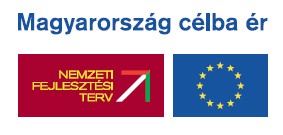| Programme |
Invitation Participation Details Registration Form Inquiries new! Travel and Accommodation |
Participants of the Seminar on Team Translation shall carry out a real-life translation task in groups of 5 or 6. The core of the Seminar is this exercise, which is preceded by three presentations, and followed by an evaluation discussion. Lab exercises are delivered either in Hungarian, English, French, or German, depending on the participants' choice.
Click here for details on the lab exercise.
| 8:00-9:00 | Registration | |
| 9:00-9:10 | Welcome address Károly Manherz, Dean, Faculty of Arts, ELTE University, Budapest | |
| 9.10-9.30 | Keynote address Kinga Klaudy, head, Interpreter and Translator Training Centre, Faculty of Arts, ELTE University, Budapest | |
| 9.30-10.00 | Keynote speech Joseph Deignan (Opticentre): Localization 4.0 | |
| 10.00-10.30 | Coffee break | |
| 10.30-10.45 | A Case Study: The Publishing Workflow (in Hungarian or English, with interpretation provided) Balázs Kis, managing director, Kilgray Translation Technologies | |
| 10.45-11.15 | Software Support for the Translation Workflow, and the MemoQ System (in Hungarian or English, with interpretation provided) István Lengyel, head of translation research, Kilgray Translation Technologies | |
| 11.15-11.30 | Coffee break | |
| 11.30-13.00 | Lab exercise (click here for details) | |
| 13.00-14.00 | Lunch | |
| 14.00-15.30 | Lab exercise (continued; click here for details) | |
| 15.30-15.50 | Coffee break | |
| 15.50-16.30 | Evaluation by groups | |
| 16.30-17.00 | Balázs Kis, István Lengyel: Summary |
Lab Exercise Details
Description of the Hand-On Exercise [Back to the programme]
Participants are divided into groups of 4 or 5. Each group will consist of a project manager, a terminologist, a proofreader, and at least 3 translators (roles can be overlapped this time). Each group receives a source document of ca. 1,250 words, which is easy to split up into multiple parts. Groups are then asked to translate this text as efficiently as possible, using the available software tools to the maximum extent.
To accomplish the task, groups will perform the following steps:
- Terminology (glossary) preparation
- Creation of a shared translation memory and a termbase; importing the glossary prepared in step (1)
- Creation of network projects for the translators; distribution of the projects
- Translation using the MemoQ system
- Proofreading using the MemoQ system
- Finalizing the target documents and exporting the translation memory
More details will be posted soon. During the Seminar, you will be able to read the instructions from this website.
Support


This event and the development of the MemoQ system is partly financed by the Hungarian government and EU cohesion funds.


